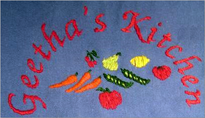 |
| Karela Atho, Ready to eat! |
Karela (Parikkai/Bitter Melon) Atho is packed with protein from the peanuts and the aromatic sesame. The combination of the sweet caramelized onions, smoky tomatoes and the rest of the ingredients combine to minimize the bitterness of bittermelons/karelas and produce an amazingly delectable dish. Tried, tested, and terrific!
Note: Almonds/cashews may be substituted for the peanuts if you have a peanut alergy.
4 to 6 Servings
Ingredients:
1 lb Bittermelons(Karela), about 2 or 3
2 large ripe Tomatoes (12 oz)
2 - 3 Tbsp Oil
1 large Red Onion (8 oz)
1 tsp Jaggery/Organic Coconut or Brown Sugar or to taste
1/2 - 1 tsp red chili powder/flakes
1 tsp ground Coriander Seeds
1 tsp ground Coriander Seeds
1/4 tsp Turmeric
1 pinch Asafetida
1/2 tsp Sea Salt, or to taste
2 Tbsp fresh Cilantro, chopped
1/3 cup white Sesame Seeds, toasted
1/3 cup roasted Peanuts
Method:
Toast the sesame in a dry skillet until golden and let cool. Roast the peanuts also if they are raw. Cool completely. Pound the sesame seeds first using a mortar and pestle until they are crushed well; add the peanuts and crush them coarsely. If made ahead, keep in an airtight container until needed.
Wash all the veggies; thinly slice the onion, mince the garlic, and thinly slice the karelas/bitter melon.
Broil, roast or grill the tomatoes until their skins char and blister. When cool enough to handle, peel and strain out the seeds. Coarsely chop the tomatoes and reserve along with the juices until needed.
Heat 2 tablespoons of the oil in the kadai/skillet and add the onions with a pinch of salt and cook until caramelized and golden brown - they should be on the crispy side; watch carefully as they burn easily at the last stage. Stir in the red pepper and coriander, cook stirring for a minute, and remove from heat. Remove the onions to a bowl and set aside; leave any extra oil in the pan.
In the same kadai/skillet and add the rest of the oil and heat. Tip in the karela with the turmeric, salt, asafetida, and the jaggery/sugar; cook until tender stirring occasionally adding a tiny sprinkle of water only if necessary.
When karela is tender, tip the onion mixture, tomatoes and half of the cilantro into the kadai/skillet and mix well and turn off the heat. Mix well.
When karela is tender, tip the onion mixture, tomatoes and half of the cilantro into the kadai/skillet and mix well and turn off the heat. Mix well.
Stir in the nuts and sesame into the karela reserving a pinch or two of the nuts and seeds for garnish.
Let the Karela Atho rest for at least 15 to 30 minutes to let all the flavors meld and marry; it is actually tastier the next day!
Let the Karela Atho rest for at least 15 to 30 minutes to let all the flavors meld and marry; it is actually tastier the next day!
Serve hot or warm garnished with the rest of the cilantro, nuts and seeds with rice/roti and dal.
Enjoy!!
 |
| Karela cooking |
 |
| Karela with cooked Onions and Roasted Tomatoes |
 |
| Karela Atho With Sesame & Peanuts |
 |
| Karela Atho, Ready to eat! |













